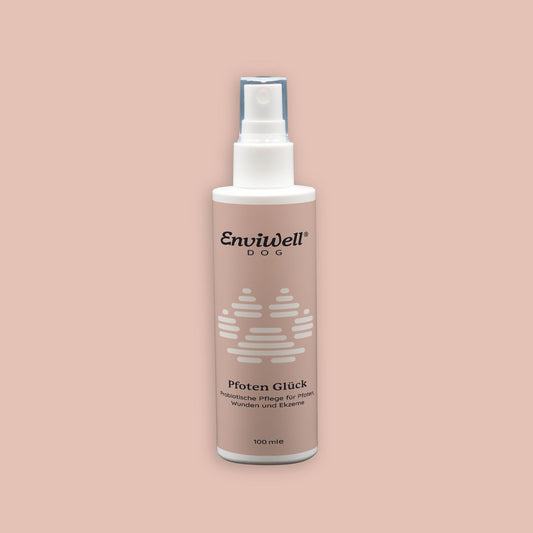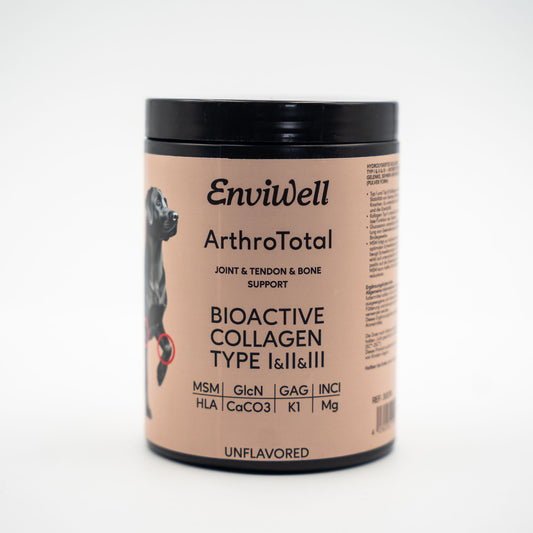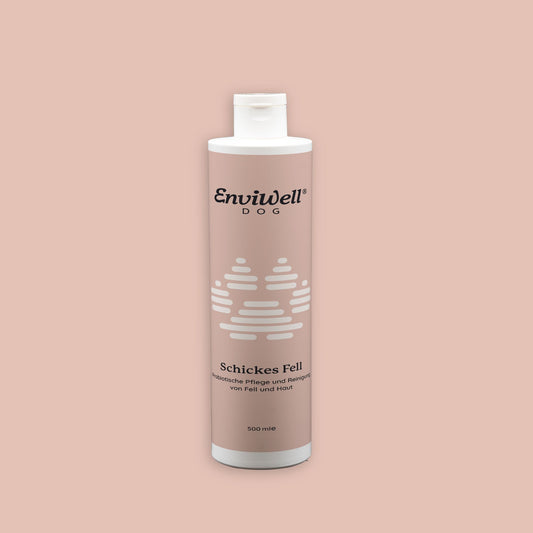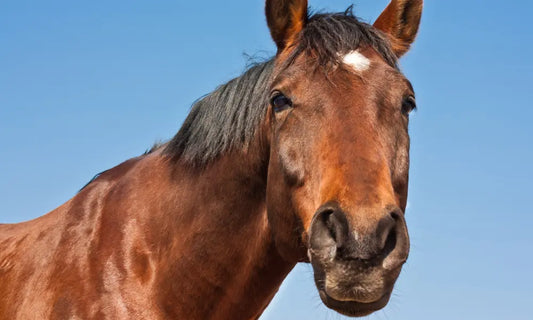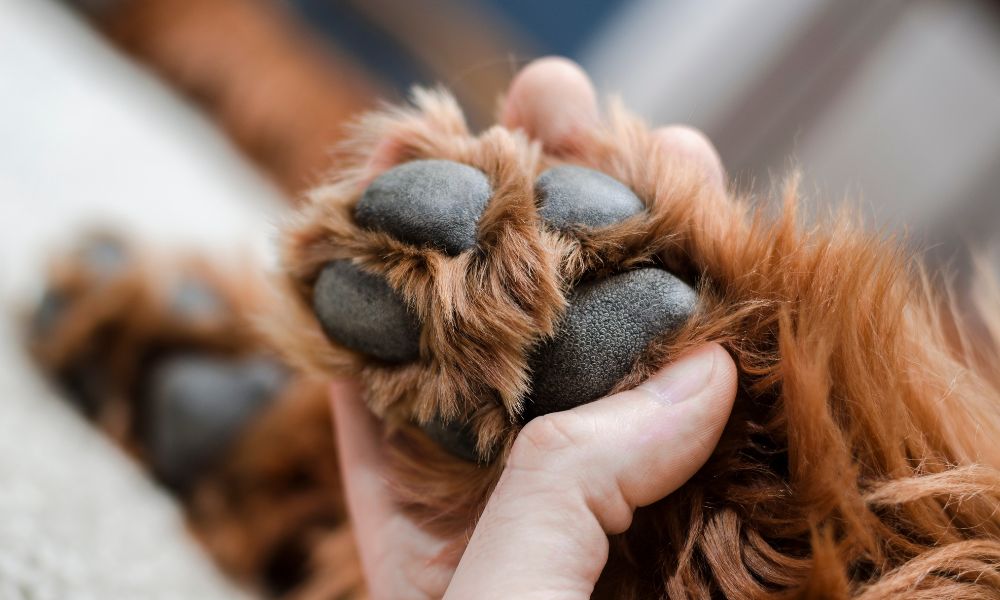
Paw care for dogs: How to keep paws healthy and supple
Alexander DurbanA dog's paws are truly multitalented: They carry them over hill and dale, over hot asphalt, icy paths, and muddy fields. At the same time, however, they are more sensitive than many dog owners realize. Regular paw care is therefore an essential part of a dog's health. It protects the sensitive pads from external influences, prevents injuries, and ensures that your four-legged friend can romp through life without a care in the world. But what happens when care is neglected?
Why is paw care so important for dogs?
A dog's paws are subjected to considerable stress every day . They must cope with various surfaces, from hot asphalt to icy snow. Without regular care, cracks, inflammation, or even painful infections can develop. Targeted paw care protects the sensitive pads and ensures your dog stays pain-free and active.
Consequences of poor paw care: Risks to dog health
Many dog owners only notice their dog has paw problems when they start limping, constantly licking their pads, or even whining in pain. Many of these problems can be prevented with regular checkups and grooming . Here are the most common consequences of poor paw care:
1. Dry and cracked paws
Especially in winter due to road salt or in summer due to hot asphalt, the pads can dry out. This makes them brittle and prone to cracking. Small cracks may seem harmless, but they can quickly deepen and develop into painful wounds.
2. Wound or inflamed pads
Dirt, sand, or small stones can get stuck in the paws and cause friction. If the paws aren't checked and cleaned regularly, they can become inflamed, which is painful for the dog and may even require veterinary treatment.

3. Injuries caused by sharp-edged surfaces
Broken glass, sharp stones, or ice can cause cuts that can become infected if not cared for properly. Regularly checking the paws after a walk helps detect such injuries early.
4. Fungal infections or mite infestation
Damp environments, such as wet meadows or puddles, promote the development of fungal infections between the toes. Itching, redness, or an unpleasant odor can be signs of this. Mites and grass mites also like to settle in the paws and cause severe itching.
5. Pain from claws that are too long
Not only the pads need care—the claws shouldn't be neglected either. If they're too long, the dog's gait changes, which can lead to incorrect strain and joint problems. Regular trimming is therefore essential.
Paws Happiness - Probiotic care for paws, wounds & eczema
- Supports skin regeneration with effective microorganisms. Preventative protection for your dog.

Step-by-step instructions for paw care for dogs
Regular paw care is important to prevent injuries, dryness, and infections . These simple steps will help keep your dog's paws healthy and supple.
Checking the paws after the walk
After every walk, it's worth taking a quick look at your dog's paws . Especially in adverse weather conditions like snow, rain, or hot asphalt, the pads can quickly become damaged.
What should you check?
- Foreign bodies such as small stones, thorns or pieces of glass
- Cracks, sores or pressure points on the balls of the feet
- Moisture between the toes (risk of fungal infections)
- Redness or swelling indicating inflammation
- Matting between the toes (especially in long-haired dogs)
Tip: If your dog is sensitive to having his paws touched, introduce him to it slowly and with patience. Gentle touches and treats will help!
Cleaning the paws (after mud, snow or road salt)
Dirty paws should be cleaned after a walk to avoid irritation and infection.
How to clean your dog’s paws properly:
- Slightly dirty paws: Wipe with a damp cloth or special paw cleaning wipes.
- Muddy paws: Rinse in a bowl of lukewarm water or rub with a damp towel.
- After snow and road salt: Be sure to rinse the bales with lukewarm water to remove the aggressive salt. Then dry thoroughly!
- After walks in forests and meadows: Pay particular attention to ticks or grass mites between the toes.
Tip: If your dog often has wet or muddy paws, you can use a special paw wash or a gentle dog shampoo.

Trimming the claws
Claws that are too long can cause pain when walking, promote misalignment, and even ingrown nails. They should be trimmed regularly , especially if your dog doesn't wear them down naturally on hard surfaces.
How to trim your dog’s claws correctly:
- Use special nail clippers or an electric nail grinder.
- Be careful not to cut too deeply – in each claw there is a blood-supplied area (“life”) that must not be injured.
- It is better to cut small pieces more often than once too many.
- If you are unsure, have your dog's claws trimmed by a veterinarian or dog groomer.
Application of paw balm or other care products
To keep your dog's paw pads supple and resilient , we recommend regular application of a paw balm or other care products. These help prevent dryness, cracks, and irritation and provide additional protection against environmental influences such as cold, heat, or rough surfaces.
Which care products help?
- Paw balm: Protects against dryness, cracks, and extreme weather conditions. It ensures supple and healthy pads, especially in winter and on rough surfaces.
- Coconut oil or petroleum jelly: Natural alternatives that moisturize the skin and form a protective barrier against environmental influences.
- Paw spray with protective film: A practical solution for quick applications, especially during long walks on hot asphalt or salted paths in winter.
"My dog had a spot on his elbow where the fur had already fallen out. The Paws Luck spray significantly improved this area—so much so that most of the fur has now grown back. The spray was also a great help, especially in winter, as road salt is known to be very damaging to our beloved furry friends' paws. Thanks to this product, my dog's paws remained well cared for."
– Giulina, product tester
To the product testPaws Happiness – Probiotic care for paws, wounds & eczema
Paw Happiness is an innovative, probiotic care product that not only has a preventative effect, but also specifically helps with skin irritations, minor wounds, and eczema. Thanks to the power of effective microorganisms, it promotes your dog's natural skin regeneration and provides rapid relief for stressed paws.
- Vegan & probiotic formula – Supports skin health through effective microorganisms.
- Pain-free application – Gentle on the skin and comfortable to use, even on irritated paws.
- Neutralizes unpleasant odors – Helps reduce bad odors from paws or wounds.
- Environmentally friendly & cruelty-free – A sustainable care option for responsible dog owners.
Paws Happiness - Probiotic care for paws, wounds & eczema
- Supports skin regeneration with effective microorganisms. Preventative protection for your dog.

Why is paw care so important for dogs?
Your dog's paws are subjected to a lot of stress every day – they have to carry him over different surfaces, protect him from the elements, and ensure safe movement. But this constant strain also makes them vulnerable to injury, dryness, and infections. Regular and careful paw care is therefore important to prevent pain and health problems .
Paw care in winter: protection from cold and road salt
- Freezing temperatures can dry out and crack the skin on the pads, making them more susceptible to injury.
- Road salt on sidewalks is particularly aggressive: it irritates the skin, causes inflammation and can lead to painful cracks or even burns.
- Ice clumps between the toes occur especially in long-haired dogs and can cause pain or pressure sores when walking.
Tip : Before the walk, apply a protective paw ointment, after the walk, wash the paws with lukewarm water and dry thoroughly.
Paw care in summer: protection from hot asphalt and dehydration
- Hot asphalt surfaces can heat up to over 50°C in summer – this can lead to burns on the bales.
- Dry air and sandy paths draw moisture out of the bales, causing them to become brittle and cracked.
- Sharp grasses and thorns can cause small cuts that easily become infected.
Tip : Plan walks in the early morning or late evening hours and favor soft forest paths or meadows. In hot weather, use paw boots or balm.

Conclusion - What you should know
Proper paw care protects against environmental influences, minimizes the risk of injury, and prevents infections. Regular checkups, appropriate cleaning, and the use of protective care products ensure that paws remain healthy and resilient. A few minutes of paw care after a walk can prevent major problems in the long run and contribute to your dog's well-being.

